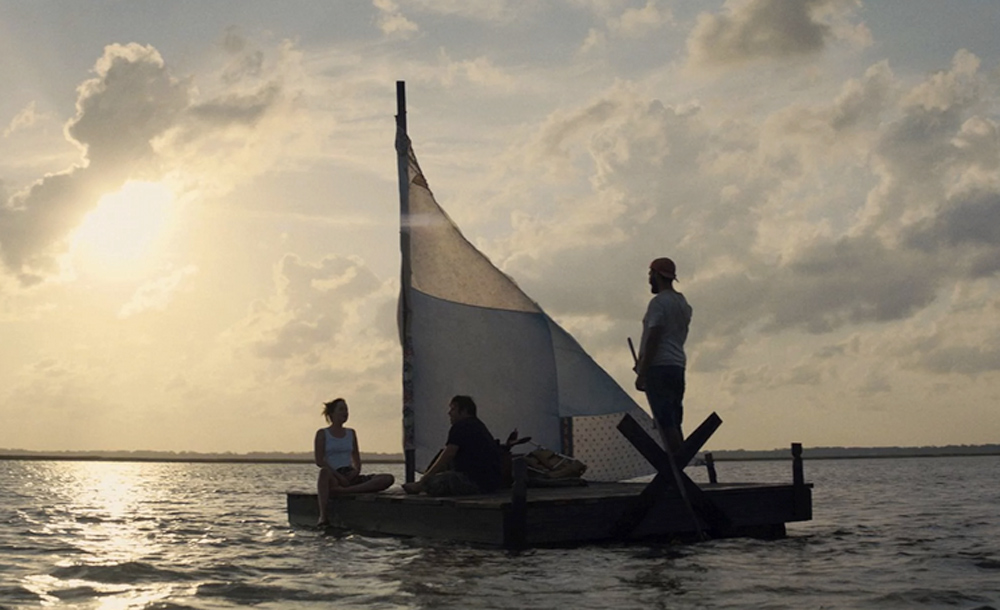It may have been the star-studded red carpet premiere that Tyler Nilson and Michael Schwartz had envisioned from the moment they put pen to paper in conceiving “The Peanut Butter Falcon,” but still, the evening went beyond their wildest imagination, a real Hollywood ending before the film even began to unspool.
“I got to sit behind Bruce Dern and John Hawkes,” recalls Schwartz, still marveling about the surreal night prior. “John had seen it before, but Bruce hadn’t, so to see him reacting and smiling and nudging John and going, ‘Oh, that’s funny,’ that’s really cool.”
Yet for all the famous actors in a cast that includes Shia LaBeouf, Dakota Johnson, Jon Bernthal and Thomas Haden Church, you get the feeling that they were the ones that were starstruck, seeing what Nilson and Schwartz did in the film’s leading man Zack Gottsagen when they first met in an acting workshop and felt compelled to write a starring vehicle for him without really having any plans before to write and direct a feature. “The Peanut Butter Falcon” is a labor of love in the truest sense, fueled by an indescribable energy that clearly coalesces around Gottsagen, who hadn’t seen many opportunities to pursue his dream of acting as someone with Down syndrome, but Nilson and Schwartz were adamant about creating a showcase for his talent, drawing upon his love of wrestling for a plot and a wicked sense of humor for the dialogue. After getting the script into Josh Brolin’s hands through some serendipity and producing a trailer that could sell others on its virtues, the film attracted a number of high-profile supporters to give “The Peanut Butter Falcon” the momentum to make it to production.
While the backstory is remarkable, “The Peanut Butter Falcon” proves to be equally special, set in the wetlands Nilson knew well from growing up on an island in North Carolina where adventure is always just off the coastline. Taking on the aura of a Mark Twain classic, the film positions Zack as its Huck Finn, watching him break free of a special care home with the notion of enrolling in a a wrestling school in Florida with his idol, the Salt Water Redneck (Thomas Haden Church). He’s joined by the roguish Tyler (LaBeouf), who has escaped himself from a bad situation after his brother (Bernthal) passed and has upset the local crab baron (Hawkes) in his attempts to keep the family fishing business going, and the two come to an uneasy truce at first that gradually becomes a friendship as a nurse from the home (Johnson) tries to track them down.
Zack may be dead serious about training with the Salt Water Redneck, but the journey he and Tyler share is breezy fun, with the two subsisting on ding dongs, baked beans and a smidgen of moonshine and finding greater sustenance in discovering a kindred spirit and Nilson and Schwartz let you feel it all, pulling fresh air of the blue skies into the frame and burnishing it with the warmth generated by Gottsagen and LaBeouf’s camaraderie. Shortly before the film arrives in theaters following a celebrated festival run that began at SXSW where it won the Audience Award in the Narrative Spotlight section, the co-directors spoke about willing the unlikely film into existence, forging a friendship between co-stars Gottsagen and LaBeouf that could transfer naturally to the screen and dodging a few sharks along the way.
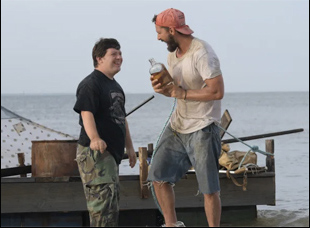
Michael Schwartz: I do feel like there’s something watching out for this story and I don’t think it’s Tyler and I that even made it happen. When we set out to write it, we wrote it for Zack, but we didn’t have any agents or managers or any famous friends and it just kept growing and growing. There were hardships that we’d have to work through to get a script written and [then it’s like] “No one will read it.” “Okay, shoot a trailer so maybe people will watch that and then maybe read a script.” Then an actor agrees to be in it and then other actors will read it, so there were all these hardships, but then when it came to showing up on set, it just felt like, “This is perfect. This is exactly how it’s supposed to be.”
Tyler Nilson: Everyone signed up to make this — our producers knew what we were making and the actors showed up and knew what we were making. There were certainly times when we might’ve disagreed on what song goes in what scene, but while we were shooting, people were there to help, our producer unit specifically to see that vision through.
Michael Schwartz: That trailer that we made [to get people onboard the production] was really clear, down to the music and the color grading and how the cinematography looked…
Tyler Nilson: The Staples Singers.
Michael Schwartz: The Staples Singers. So there’s wasn’t confusion about what we were making. It was “We’re all showing up to make that one thing.”
Was it interesting to see it come alive as you brought other people onboard?
Michael Schwartz: Yeah, it’s so fun. Neither Tyler or I really set out to be writers or directors. This story came and needed us to help sherpa it along. And we’re not protective of it either. There’s people who could be like, “Those are the lines [in the script] – they have to be the lines.” But the job of a director is really just trying to make it better 10,000 times and that’s all we do. And to work with talented actors, we were like, “How do you make it better?” It doesn’t have to be my idea. So it was really exciting to see Zack improv lines – like [one of the best lines of the film] “Rule #1 is party,” he just improvised that.
Tyler Nilson: I couldn’t write that well.
Michael Schwartz: Or the moment where Shia’s character [Tyler] teaches Zack to swim and it’s silent…we were just hanging out on the set. And [Zack and Shia] were just sitting there on that log and then Tyler [just gave some] hand signals and we just started shooting it. I don’t even think we said we’re going to shoot this as a scene. Everybody just knew, “Now this is a scene.”
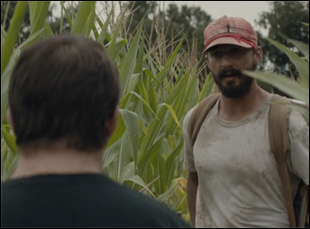
Michael Schwartz: That was the first day [of shooting], so it was so cool to see.
Tyler Nilson: And the watermelon helmets were in the script. The hay bales weren’t, but it was our first scene and we had 45 minutes to get what should take us three hours. We were thinking we’re probably not going to make our day and it was really scary. We were running and gunning and Zack was like, “Oh, there’s a hay bale. Let’s push it!” So as a team, we got all of that footage that day, but [it’s funny] because it’s a compliment as a filmmaker and a little bit of a soft ego bash as a writer when people say, “It looked like the script was improvised” because we wrote it, but I think it feels very improvy…
Michael Schwartz: Loose.
Tyler Nilson: We played jazz, man. Each scene is jazz music and you’ve got to come in and if all of a sudden, you’re like, “I’m going to go off and trumpet,” we’re going to chase you and dance with you. We’re a living, breathing organism, so we acted that way and we made sure we created the space for Shia and Zack to play their jazz music to the best of their ability. They’re great dance partners.
Did they spend any time together before shooting to get that relationship?
Tyler Nilson: It was like a month, because Shia had a job on a crab boat for three weeks.
Michael Schwartz: Before we started shooting, Shia had a job on a crab boat and we just picked him up and threw him in the back of that pickup that Jon Bernthal drives [in the film]. There were two old tires in the back…
Tyler Nilson: And to get to the crab dock where Shia was going to have a job, it was a three-hour drive south, so we drove down there every day for a couple days and it was a six-hour round trip [where] Shia and Zack sat in those old tires in the back every day, talking about life and love and loss of loved ones…
Michael Schwartz: Missing grandfathers.
Tyler Nilson: “Who’s your favorite person? What kind of person do you like? Have you ever loved? Do you think you’ll love?” Stuff like that. They wanted to connect and it was nice to watch them, but we also tried to create an opportunity for that to happen. If you put two people in the back of a moving pickup, it might happen pretty fast.
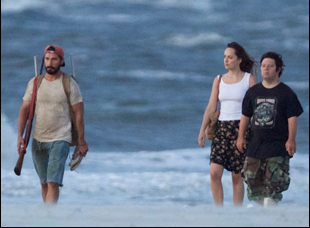
Tyler Nilson: I was a boatman in Samoa, so I have a really good understanding of water, and Mike does as well, but even the walk-on-water scene [that looks relatively straightforward], when we got there, nobody understood that there was a 14-foot tide every day, so that means every 12 hours, a foot of water comes in. It moves very fast, so we have an hour to shoot something and we shot that entire walk-on-water scene in a matter of an hour. And nobody understood except for Mike and I. So we’re on set, first-time filmmakers on day three with 80 people [in our crew] on an abandoned sand island three hours from civilization.
Michael Schwartz: We had to boat out from the harbor.
Tyler Nilson: We had to scream, “Get the cameras!” because we knew we didn’t have enough time and we knew how fast this was going to happen.
Michael Schwartz: [The crew] thought it was just going to stay like that.
Tyler Nilson: We got it done in an hour and by the time we were done, we were almost waist deep with sharks swimming, which you can see a shot of in the film, and that is happening while we’re standing in the water with sharks swimming around us. Mike’s on the radio to me and I’m hiding behind the boat, holding it in place because I have an understanding of how water affects [everything] and he’s going, “Dude, this is so cool. There are sharks everywhere!”
Michael Schwartz: [laughs] “It looks amazing.”
Tyler Nilson: I’m like, “Are you standing waist deep in the shark water?” He’s like, “Yeah.” And I’m like, “You’ve got to get out of there.” And he’s like, “Let’s just let it run for five more minutes because there’s real gold happening right now.” Because we had an understanding, it made it much less of a nightmare and we knew what we wanted. I knew that raft sailing into the sunset scene was going to be our poster. I knew it was going to be in the trailer. It was our hero moment. It was the first time [all the characters] were together. So when we went in, we might’ve lost time somewhere else and we had to replace a scene we shot on a raft to a scene we shot on the barge now, but we knew this was the hero shit, so we stayed there.
Michael Schwartz: And the landscape is a character. This isn’t something you could shoot on a soundstage in L.A. It was very much like let’s get out there on the water, in the cornfield and inside the barn and make it feel of that place.
It’s got a really nice visual language to complement that, almost in the same way you were describing the dialogue where you don’t notice the composition, but there are these gentle camera moves that bring out the energy…
Michael Schwartz: We very much wanted it to feel classic, so classic Disney was an inspiration for the camera moves and something that felt like literature, which is hard to talk about a visual language like that. But it wasn’t handheld, which is very hard on an indie movie to let the actors not have marks to hit because we wanted it to feel loose, but also capture the story. To give a big compliment to Nigel [Bluck, our cinematographer], he was able to work within those constraints and we didn’t really take lights anywhere. It was natural light. It was composed, so not handheld and still chasing the actors. I really love how it turned out.
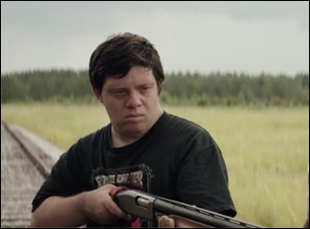
Michael Schwartz: It’s really cool. We’ve been doing some regional word-of-mouth screenings and Zack was with us in Dallas. The trailer came out two or three weeks ago and someone [randomly] had seen it and said, “Oh, are you from the movie where they shoot the gun and…?” And Zack says, [proudly] “Yes, I am.” [laughs]
Tyler Nilson: We were trying to get out of the airport and people were asking to take photos with him — some of the stewardesses and stewards — and it was one of those moments where it was like, “Wow.” It’s fun to watch somebody that’s spent a lot of time trying to be seen and recognized for a craft or an art to feel that.
Michael Schwartz: Yeah, it’s not an accident that Zack’s in the movie. He’s dedicated his life to acting and studied it in high school and teaches acting [now], so to see him to get that opportunity and for him to knock it out of the park is really cool.
Tyler Nilson: And that’s one of the best feelings ever. It feels like when [Shia’s character] Tyler watches Zack perform the miracle at the end and is in complete awe, I identify with that character a lot because that character is of service to somebody else. They’re both heroes [in the film] — it’s kind of a twofer — and I love the hero who doesn’t need to be the hero. Tyler’s heroic act is simply being of service and that’s what it felt like for me, and I might say for [Michael] as well. It was like I just get to sit on the sidelines and watch Zack be a hero and it feels so good just to have been of service to the movie, to the story and to Zack.
“The Peanut Butter Falcon” opens in limited release on August 9th, including Los Angeles at the Landmark and the Arclight Hollywood and New York at the Lincoln Square 13 and the Angelika Film Center. A full schedule of cities and dates is here.




